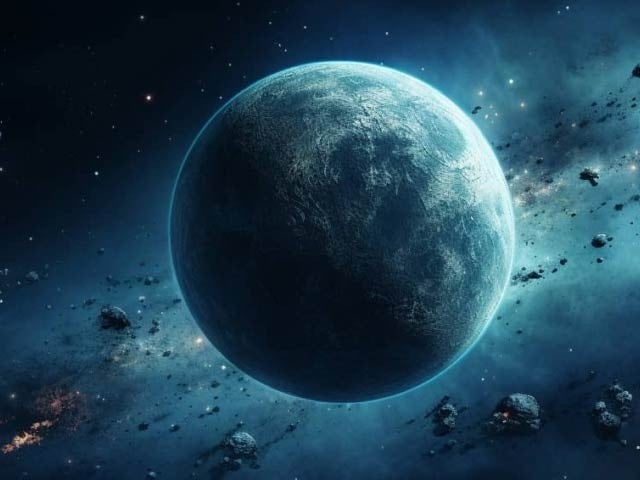Japanese experts have said in a new study that there may be an unseen planet in the Kuiper belt of our solar system, whose mass may be one and a half to three times that of Earth. Photo: File
Tokyo: Astronomers have predicted another mysterious planet in our own solar system, saying that it could be Earth-sized and orbit far beyond Neptune.
Astronomers from the National Astronomical Observatory of Japan have played an important role in this discovery. They insist that we were talking about a long-hypothetical ninth planet (Planet Nine) that could be at the outermost edges of the solar system. However, their research suggests that this planet is not only equal to Earth, but orbits beyond Neptune.
We know that the Kuiper Belt is an asteroid belt at the edge of the solar system where meteors, comets and small space rocks roam. Experts have been saying for a long time that there may be a large planet in the same Kuiper belt, which has also found gravitational signs.
The new research, published in the Astronomical Journal, suggests that a full-fledged planet may exist. This planet is believed to be at a distance of 500 astronomical units (AU) from the Sun. It should be noted that one astronomical unit is equal to a distance of 93 million miles because the distance between the Earth and the Sun is the same. Hence we call it an AU for simplicity.
It should be noted that the distance of Neptune from the Sun is up to 30 AU. Scientists have run computer simulations for a long time to see if the new planet could exist somewhere in the Kuiper Belt. That is why the experts have predicted an earth-like planet in their report. It has been named a Kuiper belt planet. It has also been said that many such planets must have existed in the early solar system.
Now, if this planet is found, it is likely that it may be tilted 30% in the direction of the solar system, and its mass may be one and a half to three times more than Earth. Then it is expected that it may be at a distance of 250 to 500 AU from the Sun.
Experts believe that this research will help in understanding the evolution of the solar system and planets.
(function(d, s, id){
var js, fjs = d.getElementsByTagName(s)[0];
if (d.getElementById(id)) {return;}
js = d.createElement(s); js.id = id;
js.src = “//connect.facebook.net/en_US/sdk.js#xfbml=1&version=v2.3&appId=770767426360150”;
fjs.parentNode.insertBefore(js, fjs);
}(document, ‘script’, ‘facebook-jssdk’));
(function(d, s, id) {
var js, fjs = d.getElementsByTagName(s)[0];
if (d.getElementById(id)) return;
js = d.createElement(s); js.id = id;
js.src = “//connect.facebook.net/en_GB/sdk.js#xfbml=1&version=v2.7”;
fjs.parentNode.insertBefore(js, fjs);
}(document, ‘script’, ‘facebook-jssdk’));


